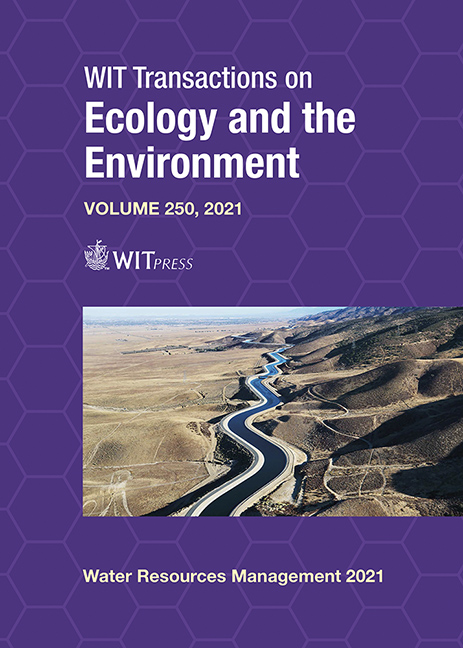TOWARDS AN ABSORPTION STRATEGY FOR THE MANAGEMENT OF FLOOD RISK: STUDY OF THE STRATEGY OF RESISTANCE AND THE ARTIFICIALIZATION OF SOILS IN THE FRANCO–BELGIAN CROSS-BORDER TERRITORY
Price
Free (open access)
Transaction
Volume
250
Pages
12
Page Range
197 - 208
Published
2021
Size
342 kb
Paper DOI
10.2495/WRM210171
Copyright
Author(s)
EMELINE COSZACH, VINCENT BECUE, JÉRÉMY CENCI, ISABELLE DE SMET, SMAIL KHAINAAR, PATRIZIA LAUDATI, CÉDRIC RIVIÈRE
Abstract
Historically, civilizations have settled near streams, rivers and seas. These territories offer a strategic position for the development of trade and transport, an ideal relief for the development of cities and fertile soils, favorable to crops. Idyllic picture if we forget their strong vulnerability in the face of rising waters. Indeed, by this choice of location, humans are also subject to the risk of flooding. Over the course of experienced disasters, human societies have developed protective measures with the aim of reducing the caused damages, both human and material. In the boom of the industrial era, these measures primarily resulted from civil engineering in a strategy of resistance against water. Dams, pumping stations, outlets, pipes, etc. then emerged, exponentially, on all continents. Even though these measures have proved their worth on several occasions and over many years, they present, and in Europe as well, several significant disadvantages. Physical and visual barriers preventing direct contact with water, they have also played a major role in the artificialization of our soils and the loss of biodiversity through the drying out of certain portions of the territory. These infrastructures, legacy of our past, are no longer adequate with the new risks and challenges of the cities of the 21st century. It is therefore necessary, in order to make our cities resilient, to adapt our management of the flooding risk currently under the symbol of water control towards the management of absorption and the “living with water”. To manage this, a historical study of the development of these infrastructures but also of their impact on the territory and the landscape will be carried out with a particular focus on the Franco–Belgian cross-border territory formed by the districts of Mons and Valenciennes.
Keywords
risk, inondation, artificialization, resistance, adaptation, nature, biodiversity, Valenciennes, Mons





